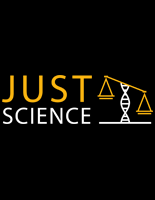Autopsies
Just Lending a Hand During Autopsy Exams
In episode two of our Supporting Medicolegal Death Investigators mini season, Just Science sat down with Lindsey McNaughton, founder of the National Association for Forensic Autopsy Technicians, to discuss the importance of forensic autopsy technicians and her efforts to create more resources for this community. When someone dies unexpectedly or of unnatural causes, performing a full autopsy examination can be an extensive process that requires many steps and close attention to detail.
Just Autopsy Results and Crime Scene Reconstruction
In episode one of our Case Studies: Part 2 mini season, Just Science sat down with Kelly Ayers, an International Association for Identification Certified Senior Crime Scene Analyst, to discuss how preliminary autopsy results can help investigators piece together a story of what happened at a crime scene. For crime scene investigators, preliminary autopsy results issued by forensic pathologist and medical examiners can be used in conjunction with other disciplines, such as bloodstain pattern analysis, to provide pivotal information about a case.
Assessing Methods to Enhance and Preserve Proteinaceous Impressions from the Skin of Decedents during the Early Stages of Decomposition
Postmortem Genetic Test Results and How to Communicate Them
This presentation is part of the Molecular Autopsy Implementation Panel, hosted by the NIJ Forensic Technology Center of Excellence on September 26, 2023.
See the YouTube Terms of Service and Google Privacy Policy
How Molecular Panels Affect the Living
This presentation is part of the Molecular Autopsy Implementation Panel, hosted by the NIJ Forensic Technology Center of Excellence on September 26, 2023.
See the YouTube Terms of Service and Google Privacy Policy
Molecular Panels and Sampling Strategies
This webinar is part of the Molecular Autopsy Implementation Panel, hosted by the NIJ Forensic Technology Center of Excellence on September 26, 2023.
See the YouTube Terms of Service and Google Privacy Policy
A Forensic Pathologist's Approach to Molecular Autopsy
This presentation is part of the Molecular Autopsy Implementation Panel, hosted by the NIJ Forensic Technology Center of Excellence on September 26, 2023.
See the YouTube Terms of Service and Google Privacy Policy
Molecular Autopsy Implementation Discussion Panel
This discussion is part of the Molecular Autopsy Implementation Panel, hosted by the NIJ Forensic Technology Center of Excellence on September 26, 2023.
See the YouTube Terms of Service and Google Privacy Policy
Bringing Molecular Autopsies to Your Morgue
This presentation is part of the Molecular Autopsy Implementation Panel, hosted by the NIJ Forensic Technology Center of Excellence on September 26, 2023.
See the YouTube Terms of Service and Google Privacy Policy
Molecular Autopsy Implementation Panel
This event features a multi-disciplinary panel of experts including forensic pathologists, medical examiners, cardiologists, geneticists, genetic counselors, and cardiac geneticists. Additionally, five pre-recorded presentations are available to familiarize oneself with molecular autopsies and provide context for the live expert panel discussion.
See the YouTube Terms of Service and Google Privacy Policy
See the YouTube Terms of Service and Google Privacy Policy
See the YouTube Terms of Service and Google Privacy Policy
Potential Postmortem Microbial Biomarkers of Infant and Younger Children Death Investigation
Study of Pelvic Growth and Development Through Examination of Interlandmark Distances and Geometric Morphometric Analyses: Implications for Subadult Skeletal Sex and Age Estimation
The Idaho Student Homicides and the Future of Forensic Genetic Genealogy
Current Concepts: Key Forensic Cases and Common Pitfalls to Avoid
This training is presented by the National Center on Forensics and will give the students a forecast of possible upcoming issues in the forensic sciences.
See the YouTube Terms of Service and Google Privacy Policy
Overview of Forensic Pathology
Human remains are treated as a separate and unique type of forensic evidence. An autopsy of the remains is conducted to establish the cause and manner of any death that is violent, unusual or untimely. A forensic pathologist completes a post-mortem examination and examine death scene findings. The medical history of an individual may also be reviewed to help determine if the death was natural...
Improving and Evaluating Computed Tomography and Magnetic Resonance Imaging in the Investigation of Fatalities Involving Suspected Head Trauma
Postmortem CT Scans Supplement and Replace Full Autopsies
Guiding Interpretation: Leveraging High-Density SNP Data from Major U.S. Populations for Forensic Genetic Analyses
Just Science Podcast: Just Rapidly Identifying Drugs Involved in Suspected Overdoses
Advancing Justice for the Missing and Unidentified Through Research - 2024 NIJ Research Conference
Forensic science research is developing essential knowledge to fill in the holes in death investigations, creating new ways to identify challenging skeletal remains. These methods inform cause of death, time of death, and familial relationships to guide investigations, identify suspects, support prosecutions, and bring justice to families.
See the YouTube Terms of Service and Google Privacy Policy




